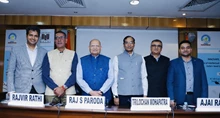
As part of its One-Million-Ha program, Vietnam has launched model rice fields, aiming to advance the country's efforts to ensure food security and promote sustainable agriculture. Spearheaded by the Department of Crop Production-Ministry of Agriculture and Rural Development (DCP-MARD), in collaboration with the Department of Agriculture and Rural Development of Can Tho City and the International Rice Research Institute (IRRI), this initiative marks a crucial step forward in the nation's sustainable agricultural.
Vietnam's agricultural competence is well-established, with the country producing over 42 million tons of rice in 2022 alone, according to FAOSTAT. This abundance not only caters to the nation's needs but also plays a crucial role in ensuring food security across the Southeast Asian region. However, with rice cultivation being a significant contributor to greenhouse gas emissions, there is an urgent need to adopt sustainable practices.
Recognizing this imperative, the One Million Hectares Sustainable Development Project for High-Quality and Low-Emission Rice Cultivation Associated with Green Growth was established. The program aims to restore the rice industry in the Mekong River Delta (MRD), a region responsible for 50% of Vietnam's rice production. The project seeks to promote rural development, lower production costs and emissions, increase the value of rice products, and strengthen the agricultural sector's resilience in the face of environmental challenges.
At the heart of the program lies a series of innovative measures designed to optimize rice production while minimizing environmental impact. These include alternate wetting and drying (AWD), mechanized direct seeding combined with fertilizer deep placement, site-specific nutrient management, integrated pest management, and sustainable post-harvest and rice straw management practices. These techniques, mandated under the One-Million-Ha program, are instrumental in achieving high-quality, low-emission rice production.
The launch of the model rice fields showcased these cutting-edge technologies in action. Attendees were introduced to mechanized direct seeding combined with fertilizer deep placement, a core feature of the program. This technology not only reduces seed and fertilizer usage but also minimizes post-harvest losses, thereby boosting rice yields and sustainability.
Furthermore, the program highlights the importance of collaboration between farmers, cooperatives, and businesses. It seeks to improve farmers' economic opportunities while encouraging environmental protection through establishing partnerships and strengthening local communities.











